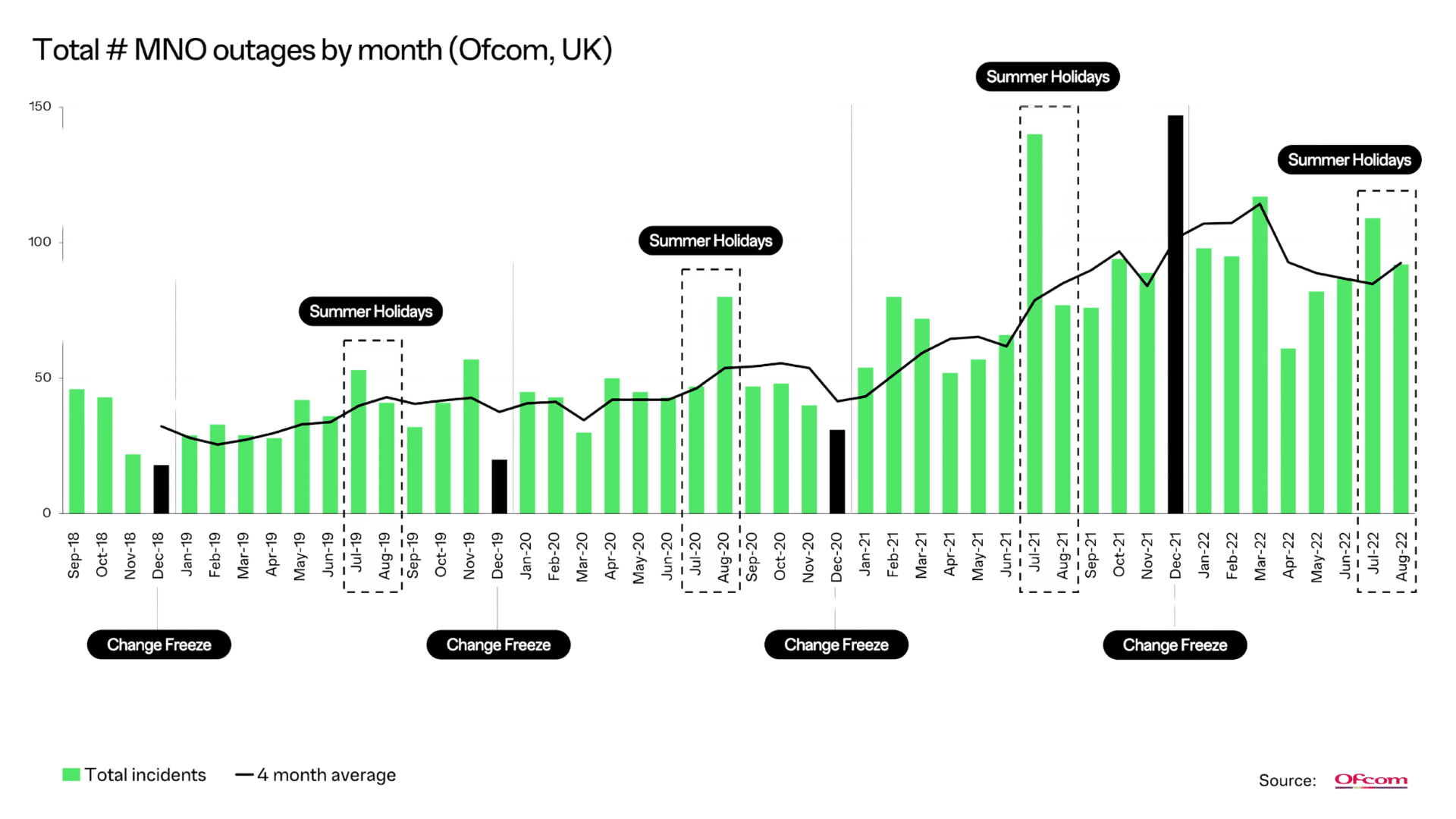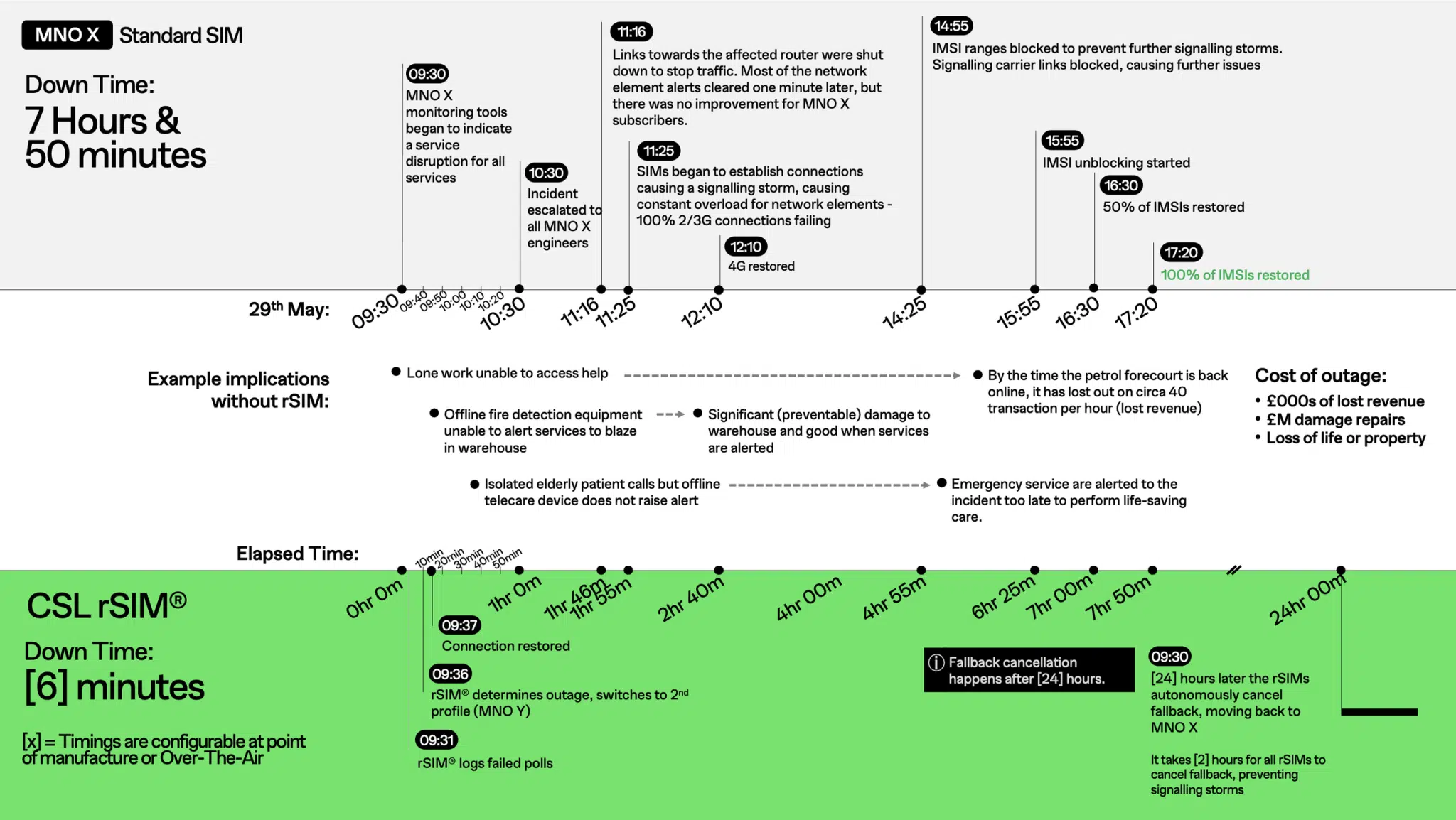AI in IoT Connectivity: Intelligence is already here with rSIM
Artificial Intelligence (AI) is revolutionising industries by enabling smarter, more efficient operations. In the world of telecommunications, AI promises to optimise network performance, predict outages, and enhance user experiences. However, where IoT devices often operate in remote or critical environments, the question still arises: Is AI truly delivering on its promises?

AI in Mobile Network Performance: Progress and Limitations
AI is the headline act in almost every industry today, and telecoms is no exception. Mobile Network Operators (MNOs) are already exploring how artificial intelligence can help them detect faults, balance network loads, and optimise performance in real time.
In theory, this should mean fewer outages and smoother service for end users. Some even promise AI-powered networks will one day operate with full autonomy. But in reality, we’re not quite there yet.
AI is primarily being deployed at the core of the network, and while this can boost performance, it doesn’t always help when the device on the ground loses connection. Even with smarter routing or predictive alerts, when something breaks, it often still takes time (and human intervention) to fix it.
Caroline Jacobson, Head of AI System Management at Ericsson, recently shared insights on how AI shapes the Telecom landscape to benefit companies, users, service providers, and society. She outlines that the current integration of AI in telecoms is still maturing. Some elements—like network optimisation—are already functioning well, while others require further refinement. For now, even the most advanced operators are still building towards that vision—AI remains a promise, not yet a fully realised solution.
In fact, recent research from Uptime Institute shows that network-related issues remain the largest cause of service disruption. While AI is being used to reduce faults, the number of mobile network outages has continued to rise in recent years.

In the future, AI may be expected to drive down downtime by “automatically detecting and resolving issues without human intervention”, but what happens when the issue lies beyond the operator’s core, on the edge, in the field?
That’s where rSIM comes in.
Introducing rSIM: Intelligence at the Edge
The AI in the core can help reroute traffic or predict capacity issues, but it can’t always solve what’s happening on the ground, at the very edge of the network. In the world of IoT, where connections power safety-critical services, resilience needs to be instant, local, and autonomous.
rSIM enables just that.

In critical IoT applications such as EV charging stations, Telecare devices, and Smart Utilities, reliable connectivity is critical. rSIM’s intelligence ensures that devices remain connected, even when network disruptions occur. By embedding intelligence within the SIM, rSIM reduces reliance on centralised AI systems, which may not respond quickly enough to prevent service interruptions.
This approach offers several benefits:
Reduced Costs
Eliminates the need for dual-SIM hardware and associated complexities.
Simplified Design
Integrates seamlessly into existing GSMA-compliant devices without firmware modifications.
Enhanced Reliability
Provides automatic failover between operator profiles, ensuring continuous connectivity.
These applications can’t wait for a central system to notice an outage and then issue a fix. rSIM fixes it right then and there, inside the SIM, on the spot.
How does this compare to other SIM technologies?
Most SIM solutions today still rely on external factors to manage failover.
- Multi-IMSI SIMs can switch between profiles but typically depend on device firmware and may suffer from performance issues or delays.
- eUICC-based solutions can switch profiles, but only when triggered by a remote server or manual instruction.
Instead of relying on device firmware or remote servers, rSIM brings everything to the SIM:
Two mobile operator profiles, built into a single SIM
Dual-core architecture that operates independently from the device
Autonomous connectivity testing from within the SIM itself
Instant switching during outages, with no external systems involved

You can find a full breakdown of how rSIM compares with other SIM types in this article.
The Intelligence You Need, Right When You Need It
As the telecoms world continues its AI journey, rSIM offers a refreshing reality check: resilience doesn’t have to wait. The intelligence is already embedded, autonomous, and acting at the edge where it matters most with rSIM.
For manufacturers, operators, and solution providers looking to ensure always-on connectivity in critical applications, rSIM isn’t a future concept. It’s a ready-now solution.
Want to learn more?
Download our White Paper to explore how rSIM is transforming IoT connectivity and driving the next wave of industry innovation.





